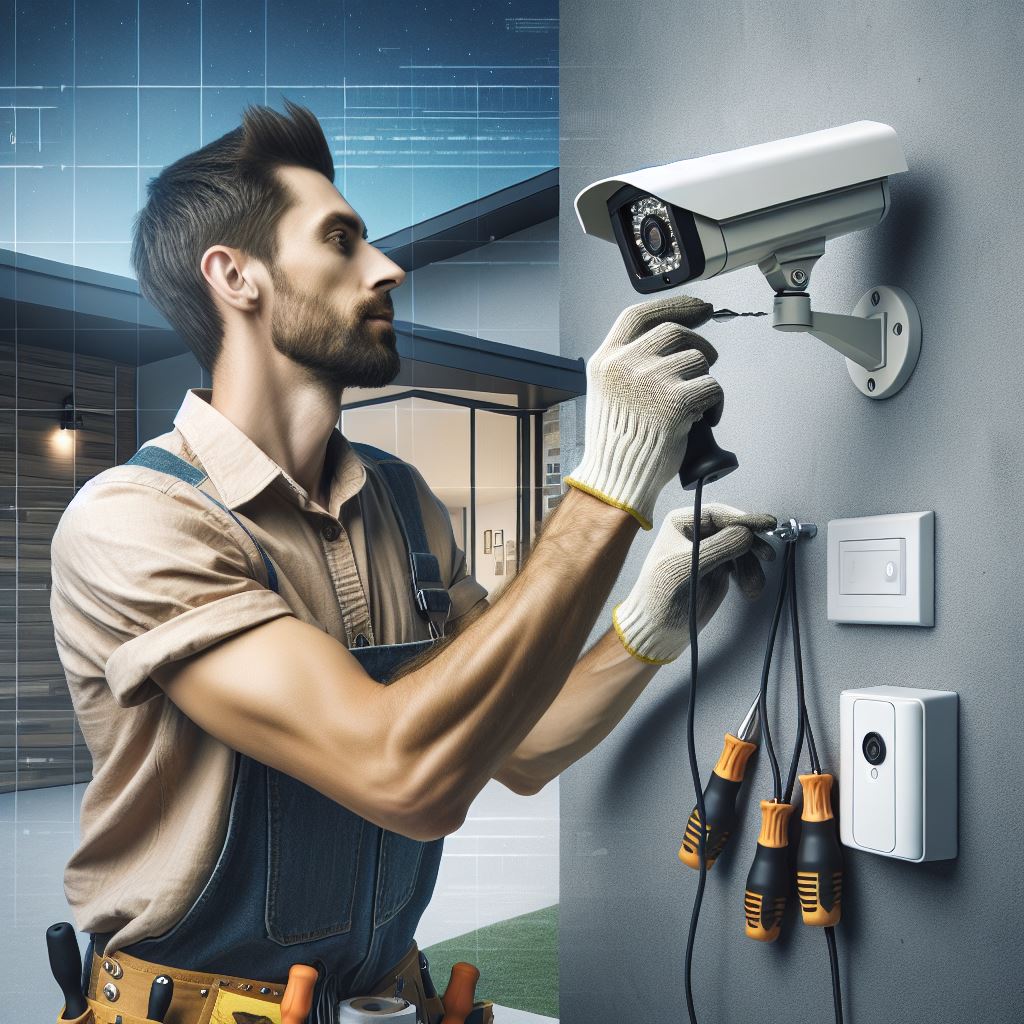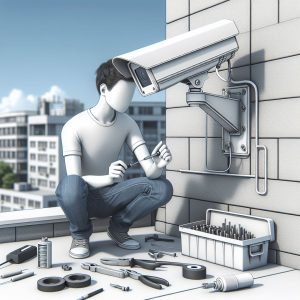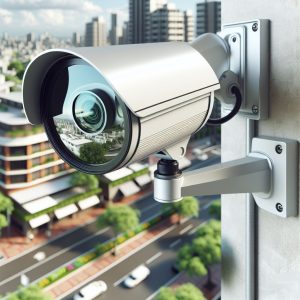Introduction
Installing a Closed-Circuit Television (CCTV) system is one of the most effective ways to enhance security for homes, businesses, and public spaces. However, despite the availability of quality equipment and installation guides, many people still make critical mistakes during the setup process. These errors can compromise the system’s effectiveness, reduce its lifespan, or even lead to legal issues.
In this article, we’ll take a deep dive into the most common CCTV installation mistakes, the reasons behind them, and how to avoid them to ensure you get the most out of your surveillance system.
1. Choosing the Wrong Type of Camera
One of the first and most common mistakes is selecting a camera that’s not suitable for your specific needs. CCTV cameras come in many types—dome, bullet, PTZ (pan-tilt-zoom), thermal, night vision, and more.
Common Errors:
- Using indoor cameras outdoors.
- Installing low-resolution cameras in areas requiring clear image capture.
- Choosing fixed cameras when adjustable coverage is needed.
Solution:
Evaluate your needs based on location, lighting conditions, and the level of detail you need. For example:
- Use weatherproof cameras for outdoor use (IP66 or higher).
- Choose infrared (IR) or night vision cameras for low-light conditions.
- Use high-resolution (4MP or higher) cameras for license plate or facial recognition.
2. Poor Camera Placement
Incorrect placement is another major issue. Placing cameras too high, too low, or facing reflective surfaces can reduce their effectiveness.
Common Errors:
- Cameras placed in blind spots.
- Facing a camera directly at a light source or window (causes glare).
- Mounting too high for facial recognition or too low for wide-area coverage.
Solution:
- Position cameras at a height of 8–10 feet for optimal coverage and detail.
- Avoid direct sunlight, bright lights, or shiny surfaces.
- Cover entrances, exits, garages, and common areas for maximum protection.
- Use wide-angle lenses for open spaces and narrow focus lenses for specific areas.
3. Ignoring Lighting Conditions
CCTV cameras need proper lighting to capture clear footage. Many people forget this crucial factor.
Common Errors:
- Installing cameras in dark areas with no additional lighting.
- Assuming all cameras have strong night vision.
- Not accounting for shadows or backlighting.
Solution:
- Use cameras with infrared or low-light sensors in poorly lit areas.
- Add motion-activated floodlights for additional illumination.
- Perform a night-time test after installation to identify blind spots or low visibility.
4. Using Low-Quality Equipment
Saving money by choosing cheap cameras or DVRs/NVRs might seem appealing at first, but it usually results in subpar performance and more costs down the road.
Common Errors:
- Buying cameras with poor resolution (below 1080p).
- Using analog systems in a digital world.
- Incompatible systems (DVRs with IP cameras or vice versa).
Solution:
- Invest in reliable, branded equipment.
- Opt for IP camera systems for better clarity and flexibility.
- Ensure all components (cameras, recorders, cables) are compatible and future-proof.
5. Neglecting Network and Storage Requirements
Modern CCTV systems often rely on network bandwidth and data storage. Underestimating these needs can cause major issues.
Common Errors:
- Insufficient storage space for high-resolution video.
- Weak or outdated network infrastructure.
- No remote access configuration.
Solution:
- Calculate storage needs: A single 1080p camera recording 24/7 can require over 60GB per day.
- Use NVRs or cloud-based storage with backup options.
- Ensure your network supports PoE (Power over Ethernet) if using IP cameras.
- Set up remote access securely through apps or web interfaces.
6. Ignoring Privacy and Legal Regulations
Many people install CCTV without understanding local laws regarding surveillance and privacy.
Common Errors:
- Pointing cameras into neighbors’ properties or public areas.
- Not informing employees or customers about surveillance.
- Recording audio without consent (illegal in many jurisdictions).
Solution:
- Check local laws and regulations before installing CCTV.
- Display signage to notify people of surveillance.
- Avoid pointing cameras at private areas like bathrooms or neighboring homes.
7. Improper Cable Management
Messy cabling can not only be an eyesore but also lead to signal degradation or system failure.
Common Errors:
- Using low-quality or incorrect cables.
- Leaving exposed wires vulnerable to weather or vandalism.
- Not securing cables properly.
Solution:
- Use shielded, weather-resistant cables for outdoor use.
- Protect and hide cables using conduits or trunking.
- Label all cables for easier maintenance.
8. Skipping System Testing After Installation
Some users install the system and assume it’s working without testing each camera and feature.
Common Errors:
- Not checking live feeds.
- Skipping night-time performance tests.
- Not verifying motion detection or remote access.
Solution:
- Test each camera’s live view, motion detection, and night vision.
- Use the system for a few days and check recorded footage for quality.
- Confirm that alerts, notifications, and cloud access are working.
9. No Maintenance Plan
Like any electronic system, CCTV systems need regular checks and maintenance.
Common Errors:
- Never cleaning camera lenses.
- Not updating firmware/software.
- Ignoring system logs or error messages.
Solution:
- Clean camera lenses every few months.
- Schedule regular maintenance checks (every 6–12 months).
- Update firmware, apps, and storage devices regularly.
- Check power supplies and UPS to prevent unexpected downtime.
10. Overlooking Backup Power and Surge Protection
Power loss or surges can damage your CCTV system or lead to critical downtime.
Common Errors:
- No UPS (Uninterruptible Power Supply).
- No surge protector for outdoor cameras.
- Relying solely on grid power.
Solution:
- Install a UPS to keep the system running during short outages.
- Use surge protectors to protect against electrical spikes.
- Consider solar-powered cameras for off-grid or remote areas.
Conclusion
A CCTV system is only as good as its planning and installation. Avoiding these common mistakes can help you create a surveillance setup that is reliable, effective, and compliant with legal standards.
Here’s a quick checklist to ensure success:
✅ Choose the right camera type
✅ Plan optimal placement and lighting
✅ Invest in quality equipment
✅ Ensure proper networking and storage
✅ Follow legal guidelines
✅ Maintain clean wiring and do routine checks
✅ Protect your system from power issues
Whether you’re installing the system yourself or hiring professionals, taking the time to understand and plan the setup will greatly improve your security outcome and reduce future headaches.
Secure Your Home and Business with Garrison Alarms!
Experience unmatched safety with Garrison Alarms – your trusted partner in cutting-edge home and business security solutions. With over 35 years of experience, we offer expert installation, state-of-the-art technology, and personalized security strategies tailored to your unique needs.
Our Services Include:
- Home & Business Alarms: Maximize security with our advanced wired and wireless alarm systems.
- CCTV Systems: Protect your property with high-resolution, 4K HD, and color night vision cameras.
- Access Control: Secure your premises with keypad entry, biometric solutions, and more.
- Alarm Monitoring: 24/7 monitoring to ensure your safety and peace of mind.
Why Choose Garrison Alarms?
- Expert & Professional Service: Our licensed technicians provide top-notch installation and support.
- Customer Satisfaction: We prioritize your security and satisfaction with a focus on quality and reliability.
- Affordable Pricing: Get the best security solutions at competitive prices.
Get a FREE Quote Today! Visit Garrison Alarms or call us at 09 520 4875 to learn more and secure your property today!
Garrison Alarms – Your Safety, Our Priority




